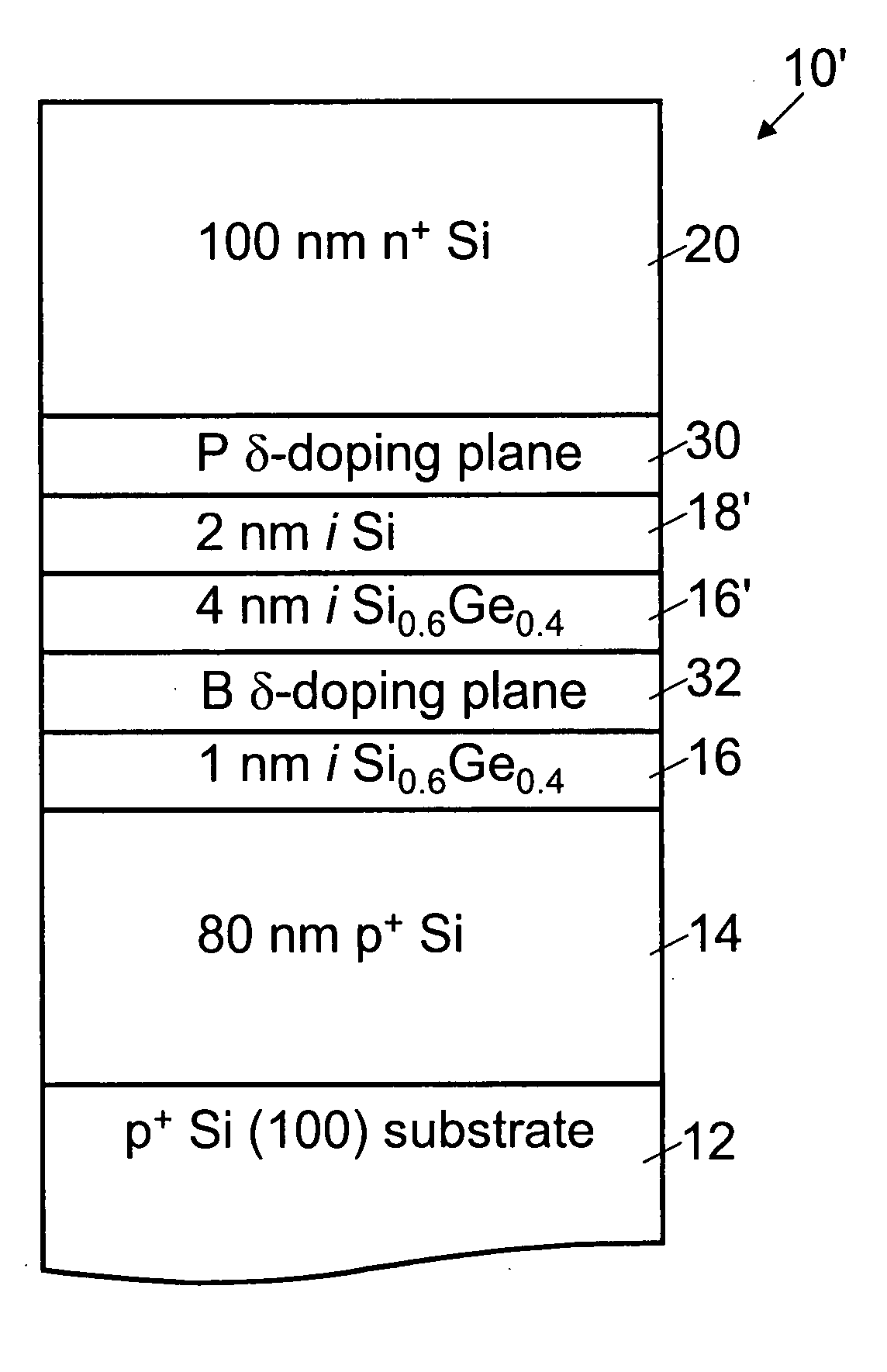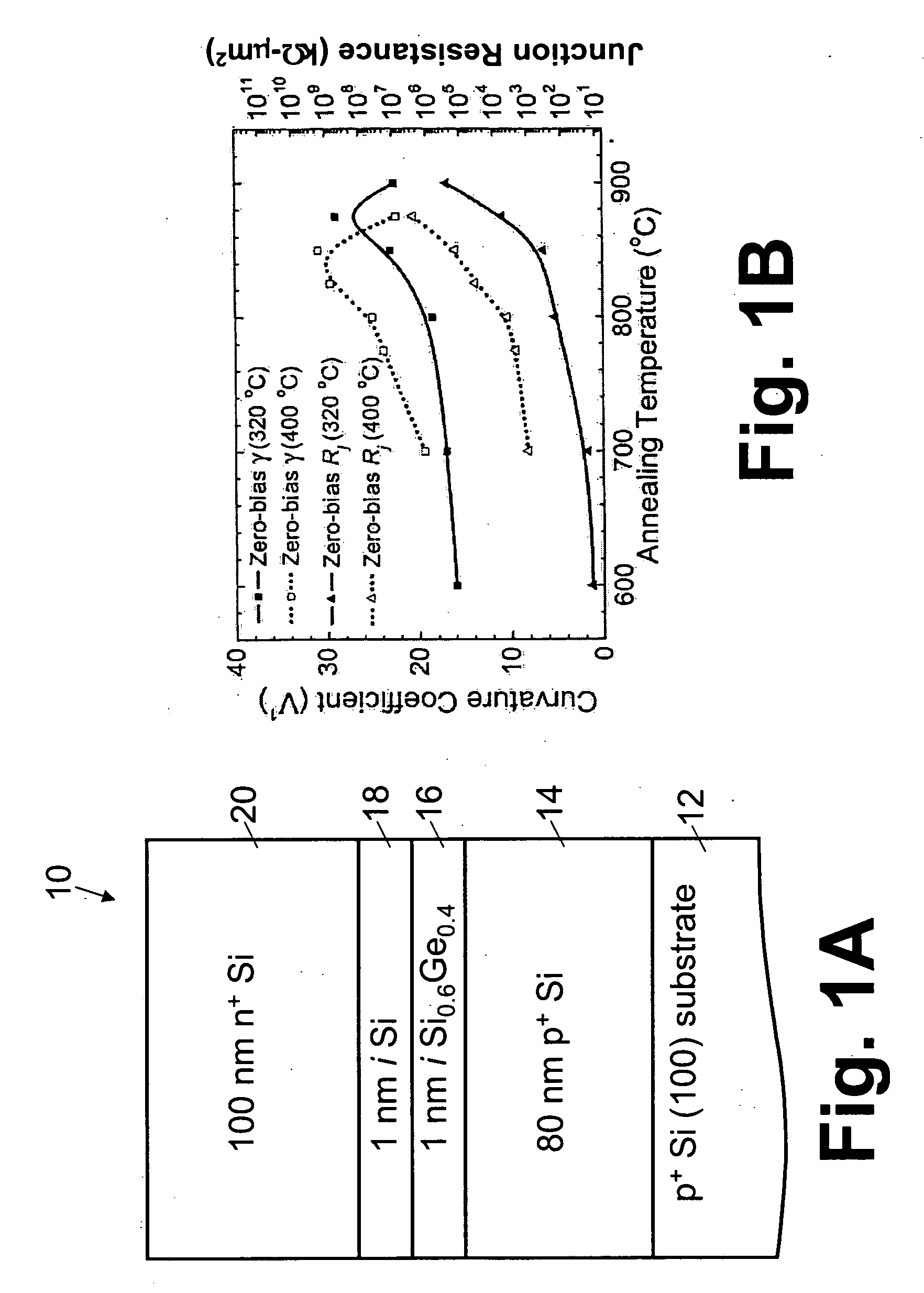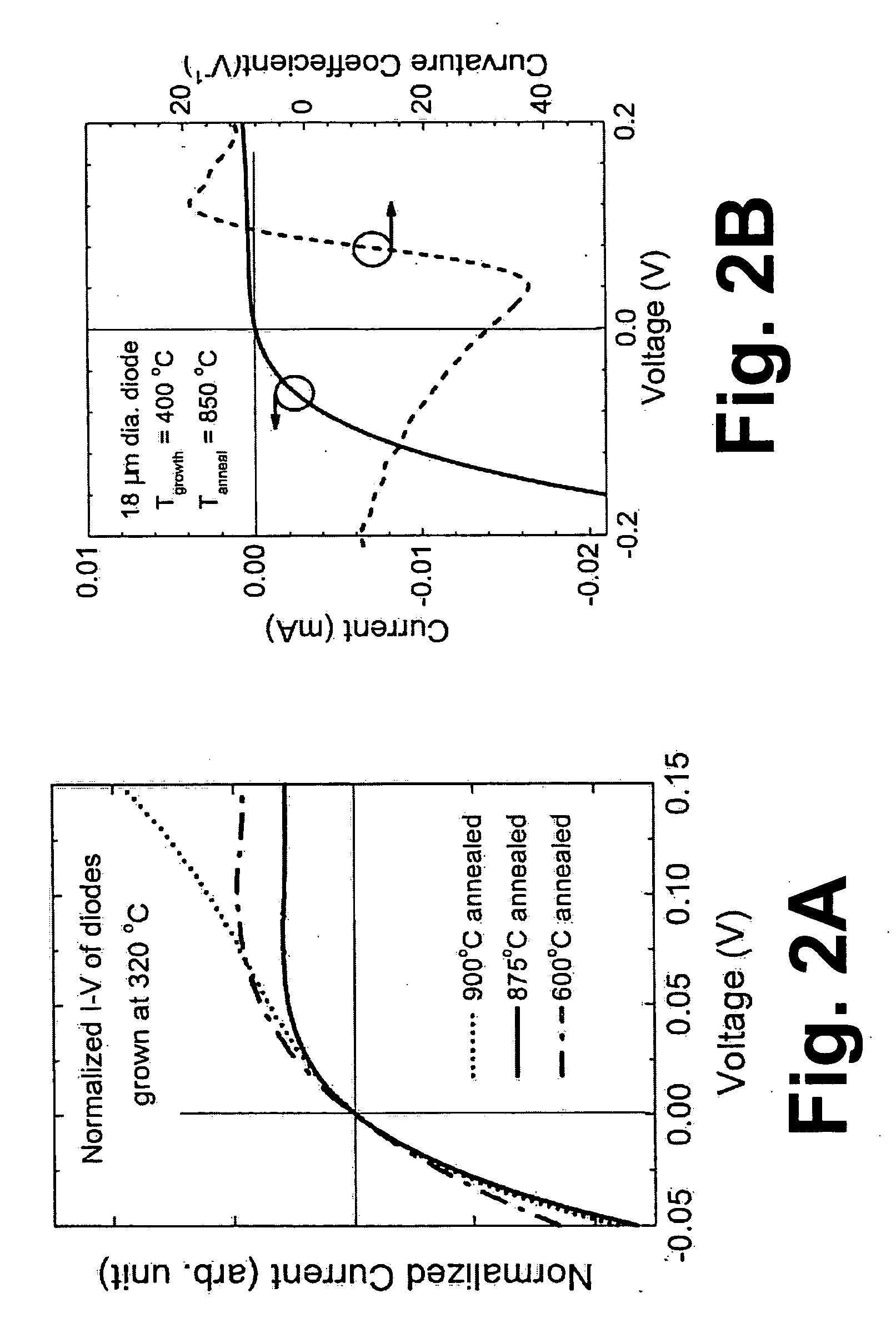Silicon-based backward diodes for zero-biased square law detection and detector arrays of same
a backward diode and zero-biased square law technology, applied in the field of optical detectors, radiometers, imagers, can solve the problems of increasing system and pixel complexity, extra noise and drift, and devices not readily amenable to imaging applications, so as to reduce the height of the tunneling barrier
- Summary
- Abstract
- Description
- Claims
- Application Information
AI Technical Summary
Problems solved by technology
Method used
Image
Examples
example 1
Si / SiGe Backward Diode
[0022] With reference to FIG. 1A, a Si-based backward diode structure 10 was fabricated. The Si-based backward diode structure 10 is a step p-i-n structure formed on a p+ Si (100) substrate 12 and includes an 80 nm boron (B)-doped p+ Si layer 14, an active region including a 1 nm Si0.6Ge0.4 layer 16 and a 1 nm Si layer 18, and a 100 nm phosphorous (P)-doped n+ Si cap layer 20. The active region layers 16, 18 are nominally undoped. Without being limited to any particular theory of operation, it is believed that the SiGe layer 16 reduces the tunnel barrier height, to enhance the momentum mixing, and hence to reduce the junction resistance.
[0023] Several samples of the structure 10 of FIG. 1A were grown by molecular beam epitaxy (MBE), using elemental Si and Ge in electron-beam sources. The substrates 12 were 75 mm B-doped (ρ=0.015-0.04Ω·cm) Si (100) wafers. The nominal doping levels for both the p-side 14 and n-side 20 are 5×1019 cm−3. Two structures were grown...
example 2
Si / SiGe Backward Diode with Delta-Doping
[0033] With reference to FIG. 3, samples of a modified Si-based backward diode structure 10′ were also fabricated. The structure of FIG. 3 differs from that of FIG. 1A in that it includes an n-type (phosphorus) delta doping 30 adjacent the 100 nm phosphorous (P)-doped n+ Si cap layer 20, and a p-type (boron) delta doping 32 adjacent the 1 nm nominally undoped Si0.6Ge0.4 layer 16. The 1 nm Si layer 18 is increased in thickness to a 2 nm Si layer 18′ disposed between the delta dopings 30, 32, and an additional 4 nm (nominally undoped) Si0.6Ge0.4 layer 16′ is also disposed between the delta dopings 30, 32. Although not shown, in some embodiments a second phosphorus delta doping is disposed at or near the top (exposed) surface of the phosphorus (P)-doped n+ Si cap layer 20 to reduce contact resistance. Alternatively, Ge doping or another technique for reducing contact resistance can be employed.
[0034] With reference to FIG. 4, I-V plots are show...
example 3
Asymmetric Si / SiGe Backward Diode with Delta-Doping
[0038] For example, FIG. 6A shows a contemplated Si-based backward diode structure 100 that is modified respective to the structure 10′ of FIG. 3. The structure of FIG. 6A differs from that of FIG. 3 in that a thicker ˜800 nm bottom p+ silicon layer 140 and 2 nm SiGe layers 160, 161 having a higher germanium fraction of 0.5 and having symmetric 2 nm thicknesses symmetrically sandwiching the p-type (boron) delta doping 32. Additionally, the bottommost SiGe layer 160 is doped p+.
[0039] The zero bias band structure for the structure 100 is shown in FIG. 6B. Although not shown, in some embodiments a second phosphorus delta doping is disposed at or near the top (exposed) surface of the phosphorus (P)-doped n+ Si cap layer 20 to reduce contact resistance. Alternatively, Ge doping or another technique for reducing contact resistance can be employed. FIG. 6B diagrammatically shows an estimated zero bias band structure in the vicinity of t...
PUM
 Login to View More
Login to View More Abstract
Description
Claims
Application Information
 Login to View More
Login to View More - R&D
- Intellectual Property
- Life Sciences
- Materials
- Tech Scout
- Unparalleled Data Quality
- Higher Quality Content
- 60% Fewer Hallucinations
Browse by: Latest US Patents, China's latest patents, Technical Efficacy Thesaurus, Application Domain, Technology Topic, Popular Technical Reports.
© 2025 PatSnap. All rights reserved.Legal|Privacy policy|Modern Slavery Act Transparency Statement|Sitemap|About US| Contact US: help@patsnap.com



